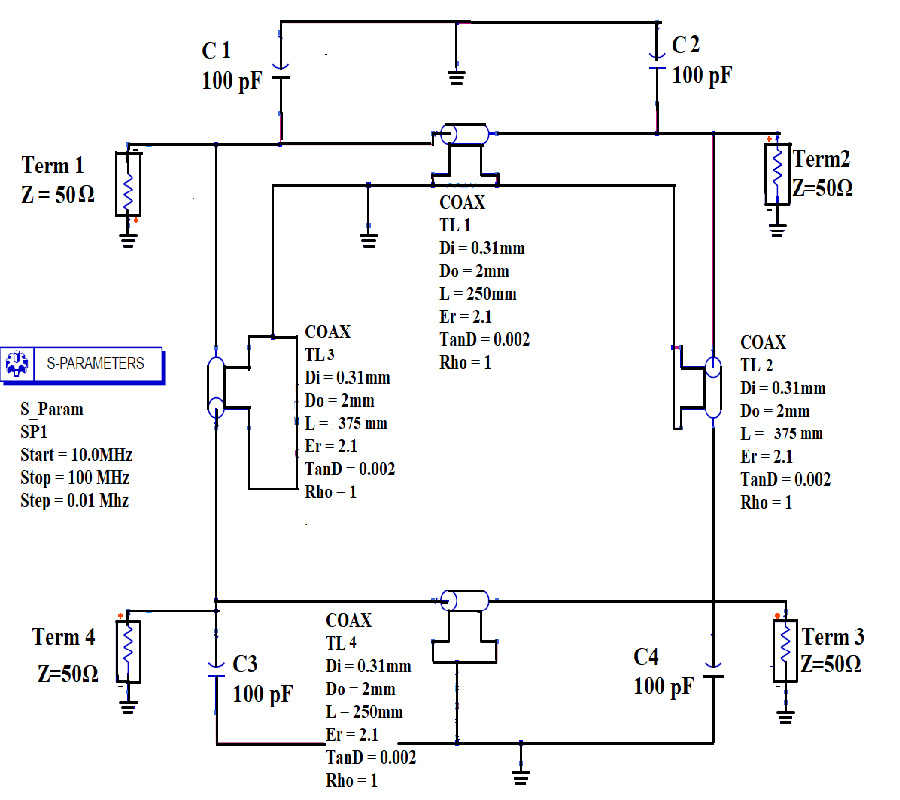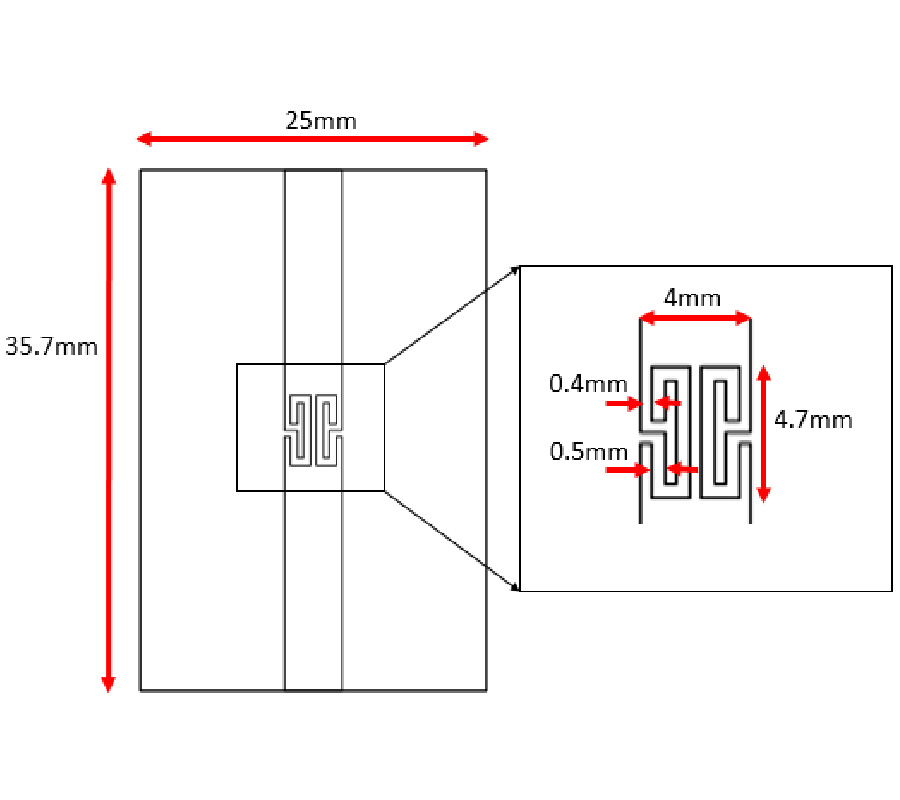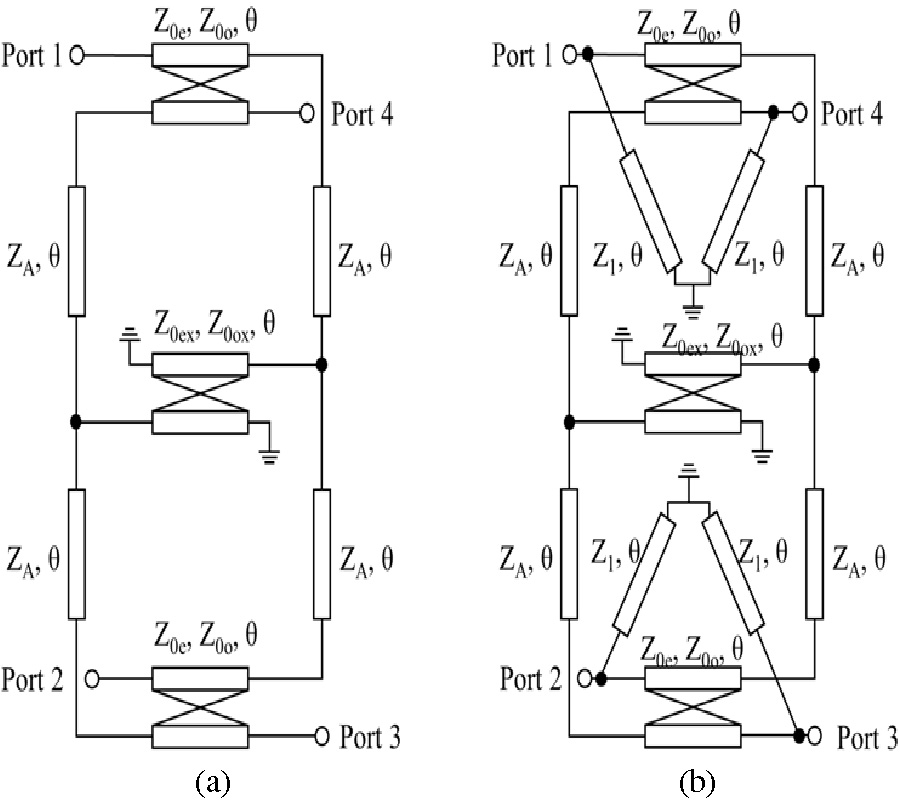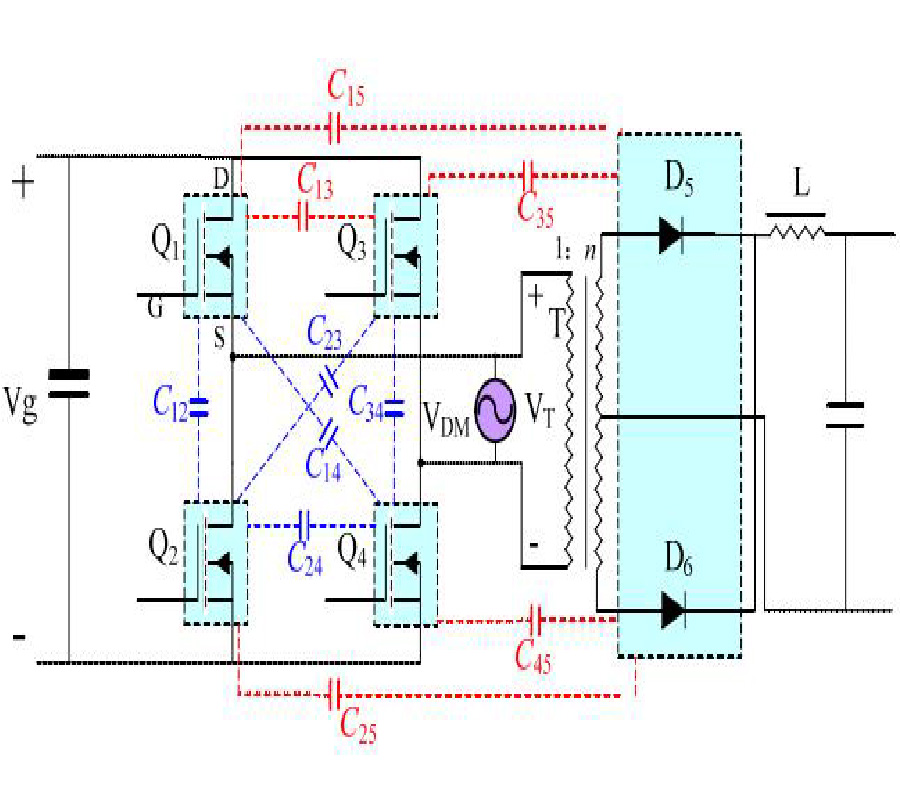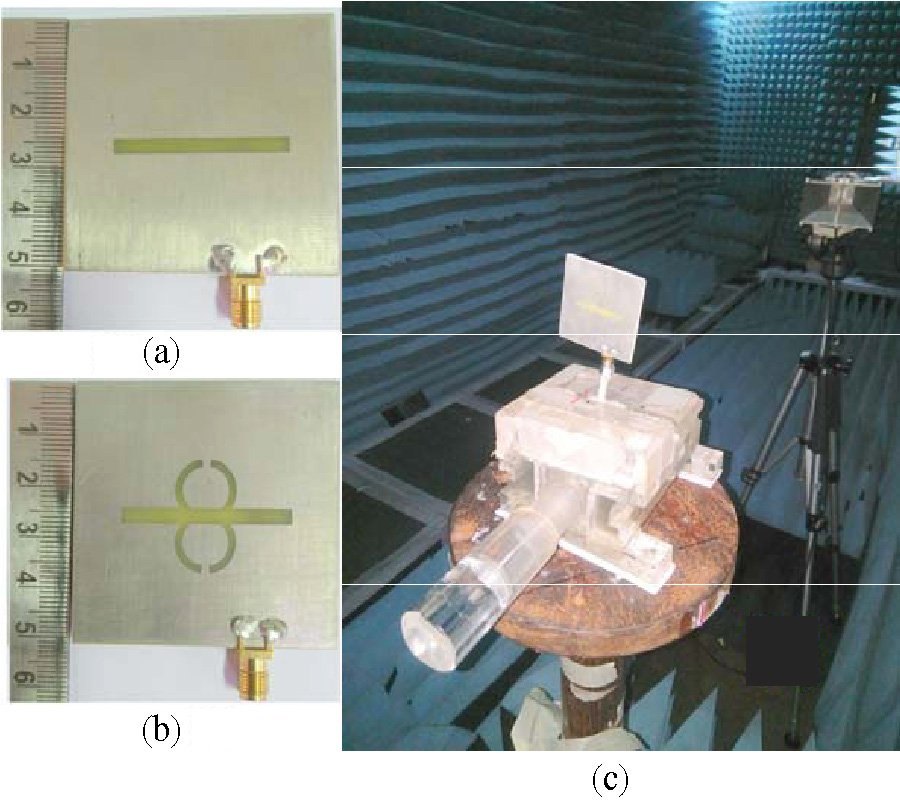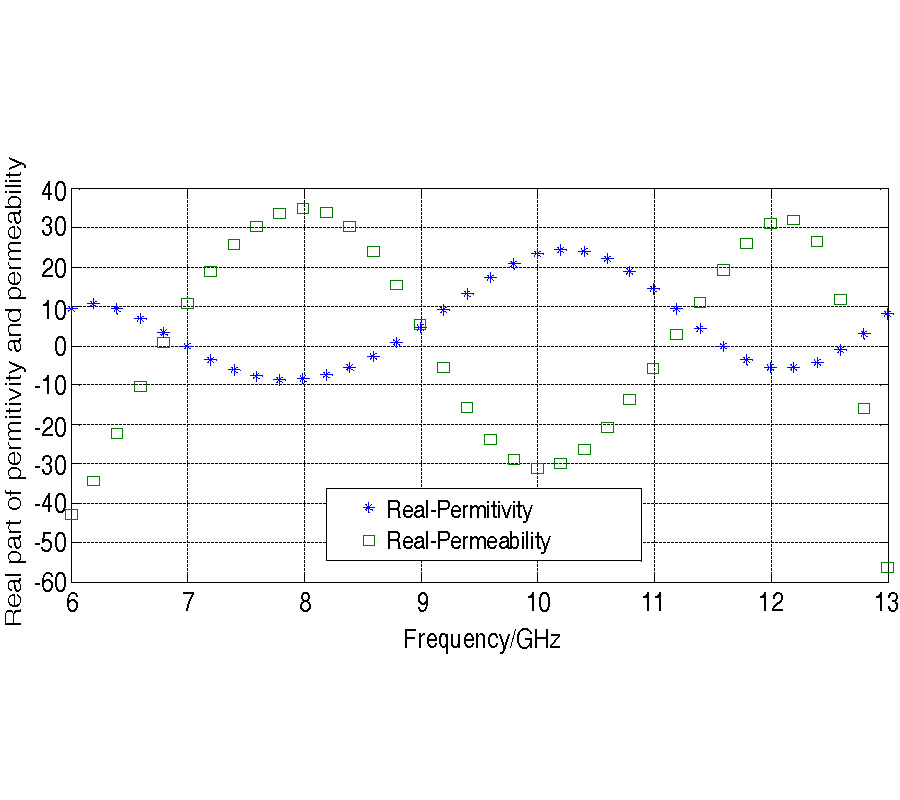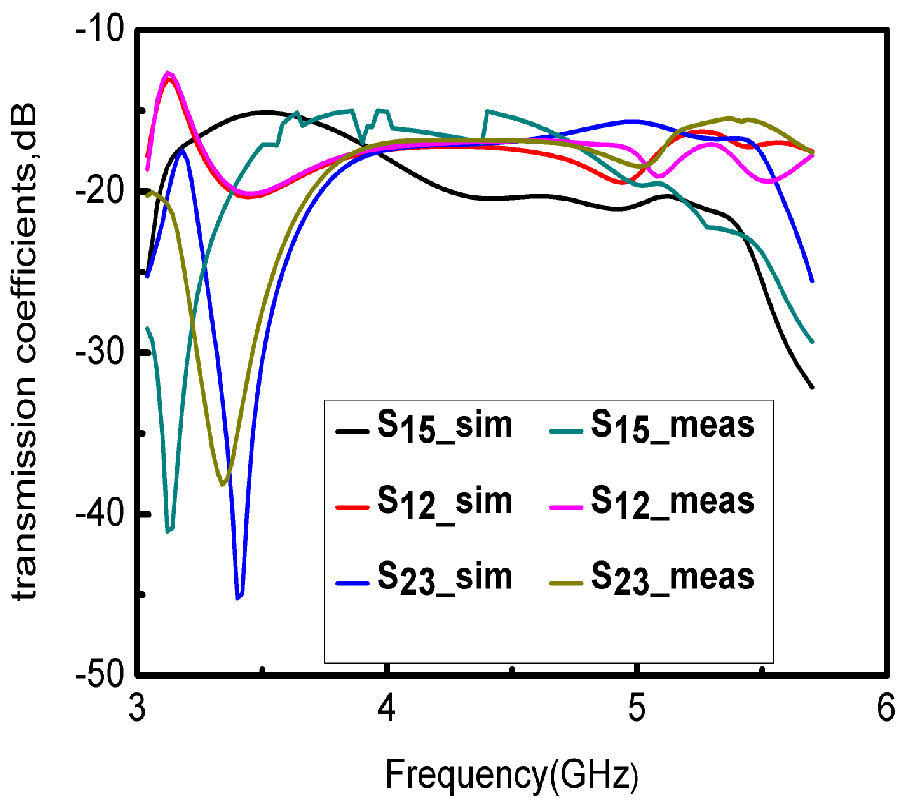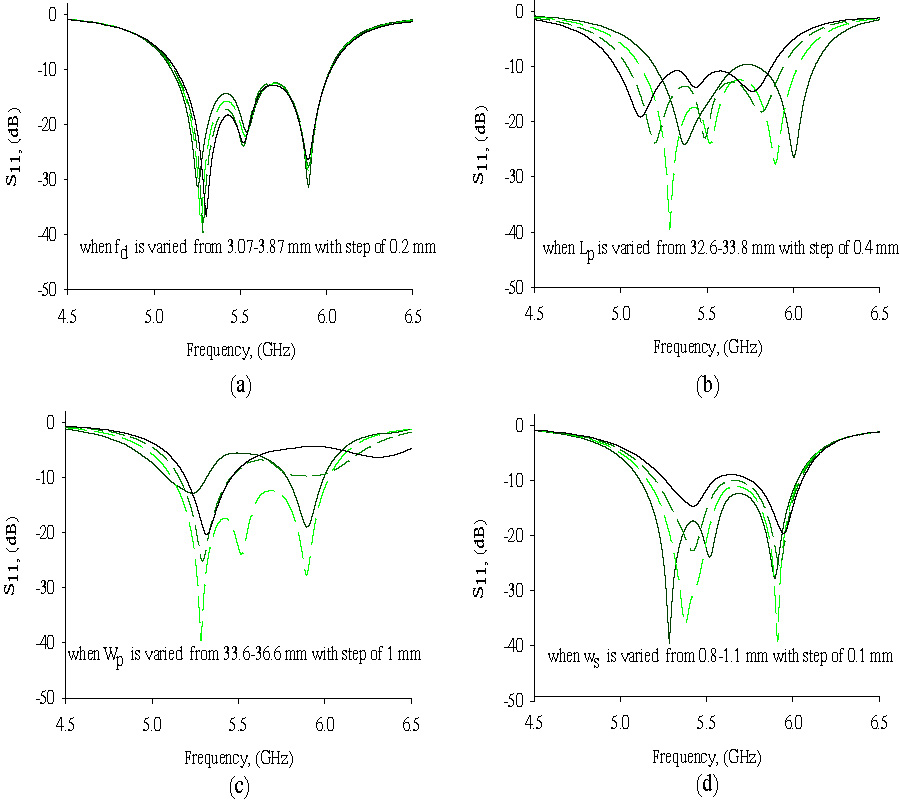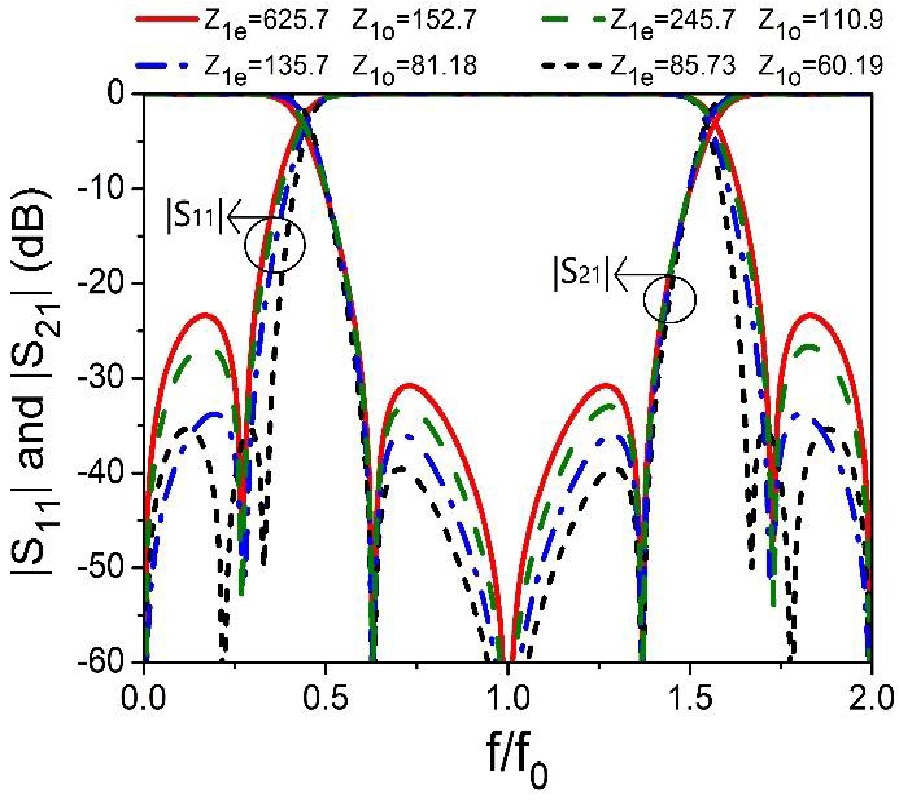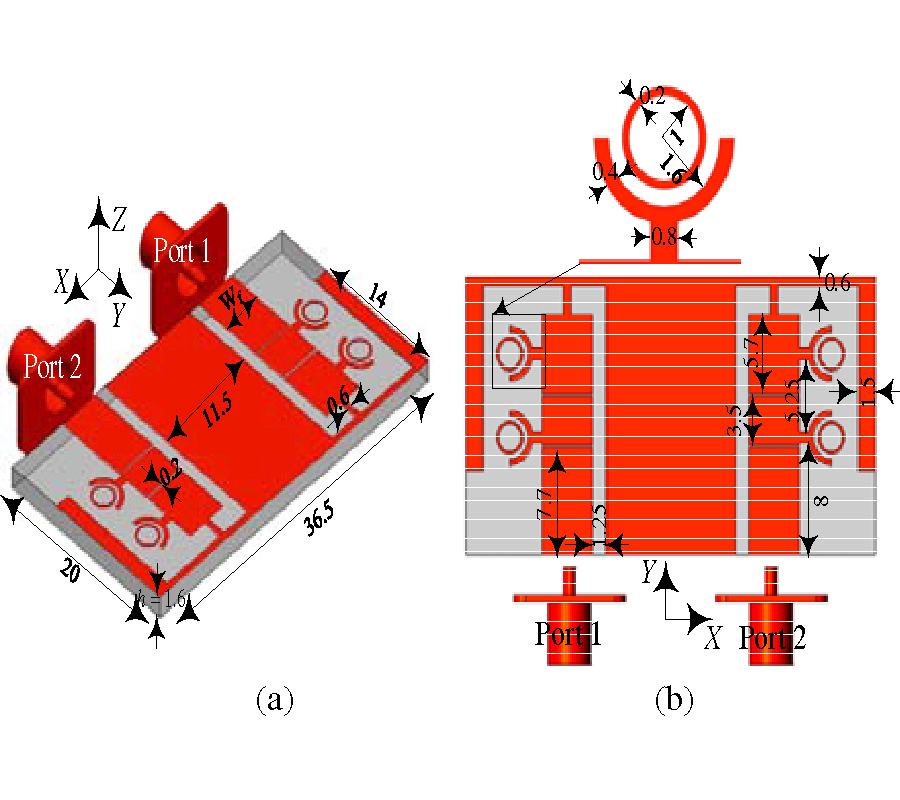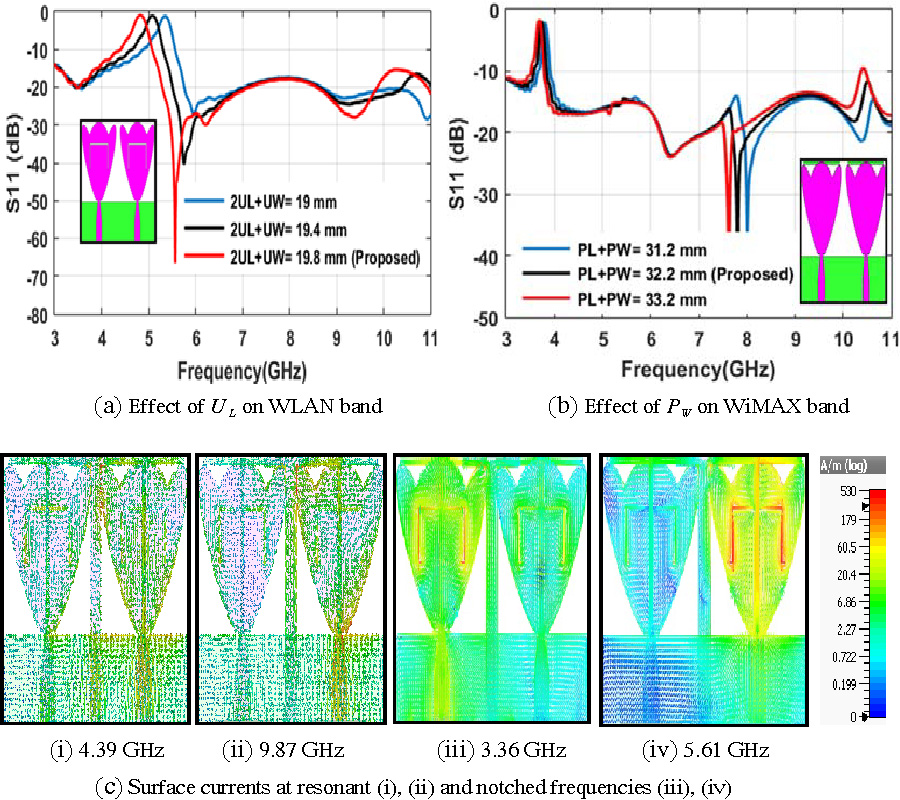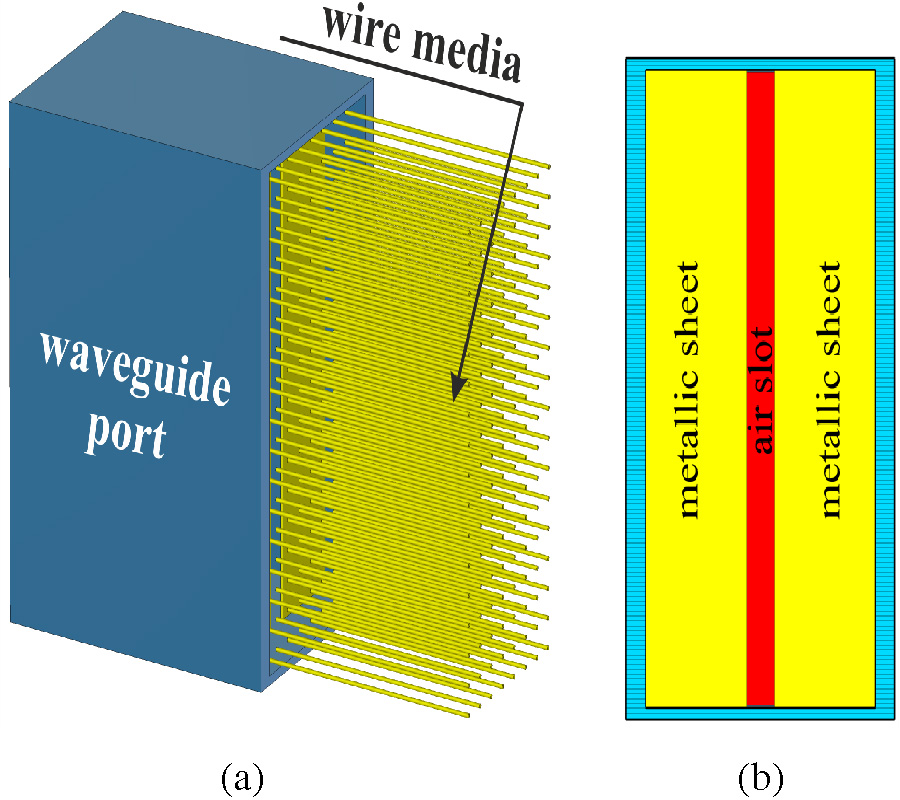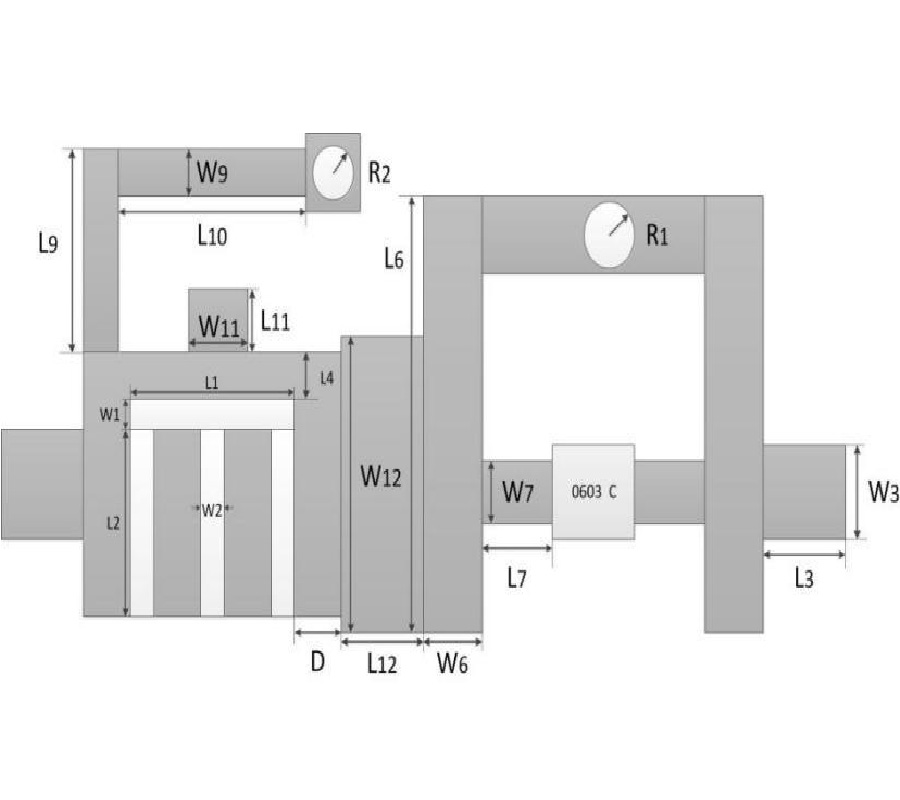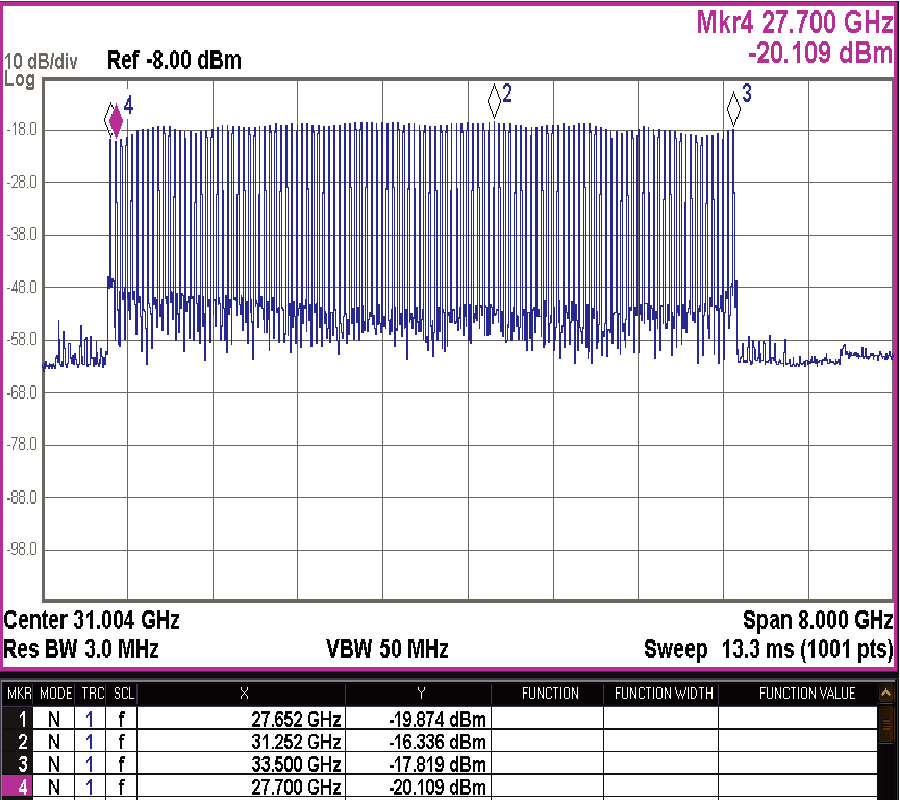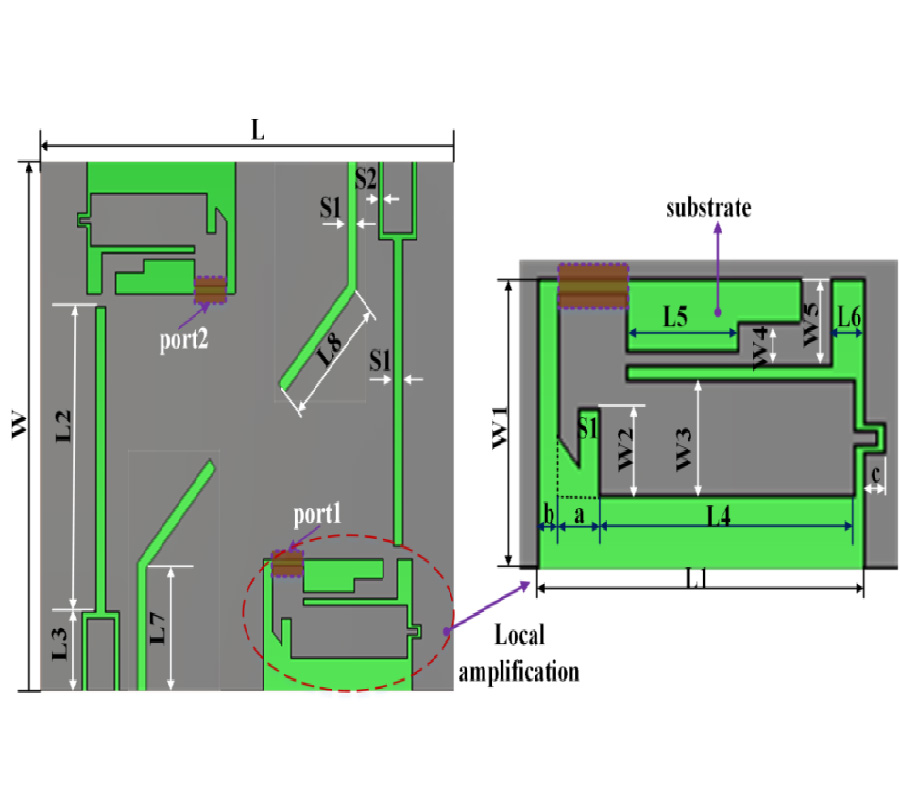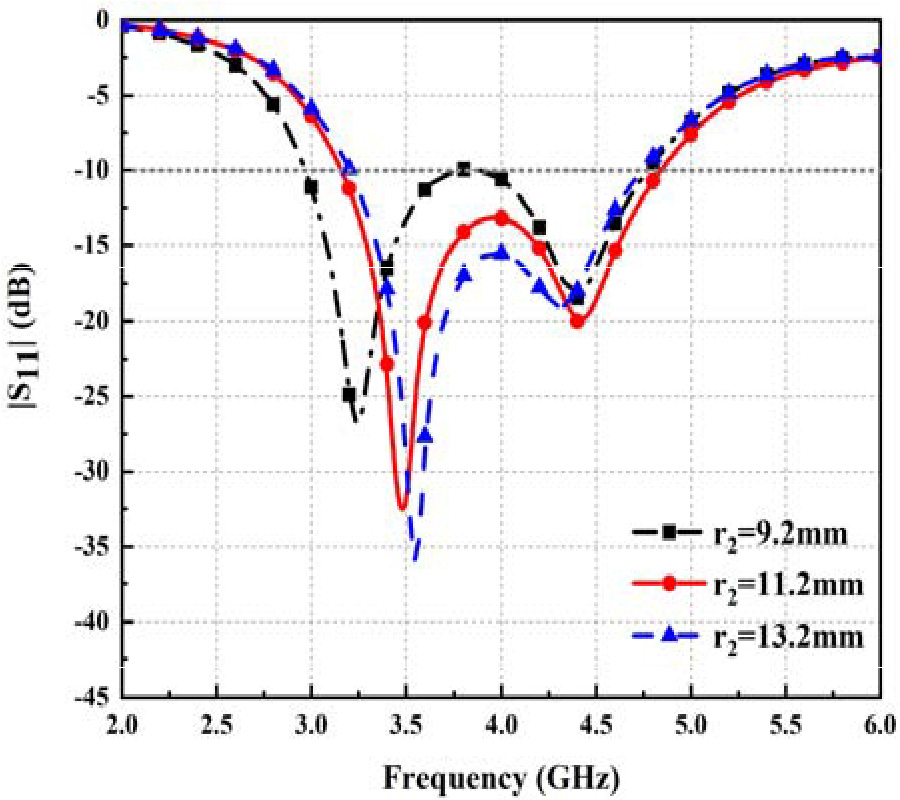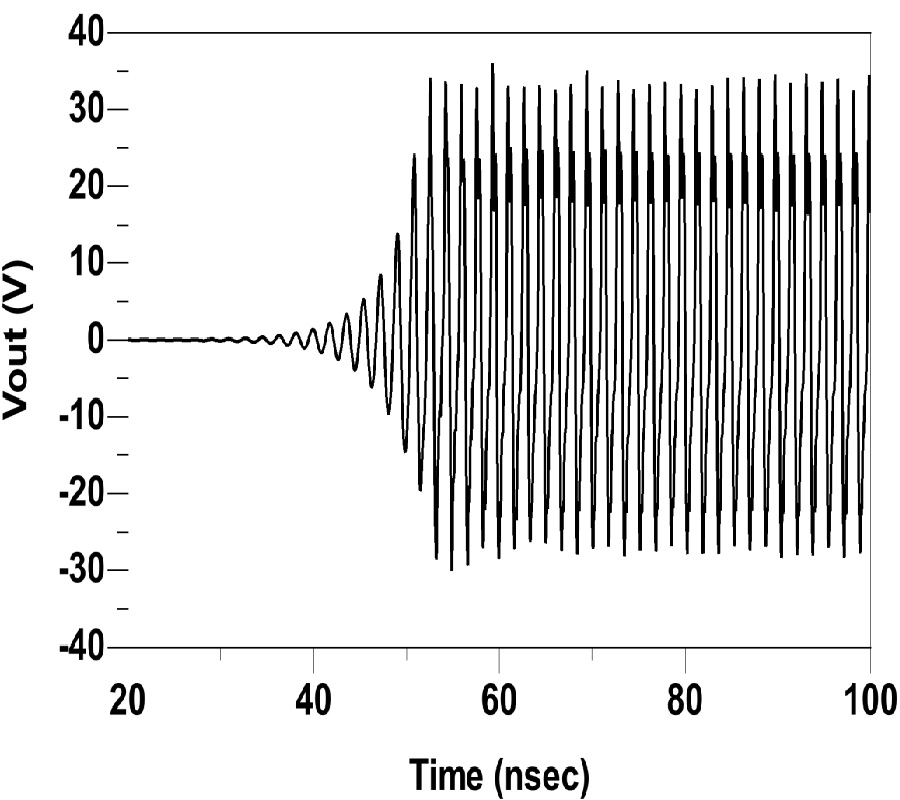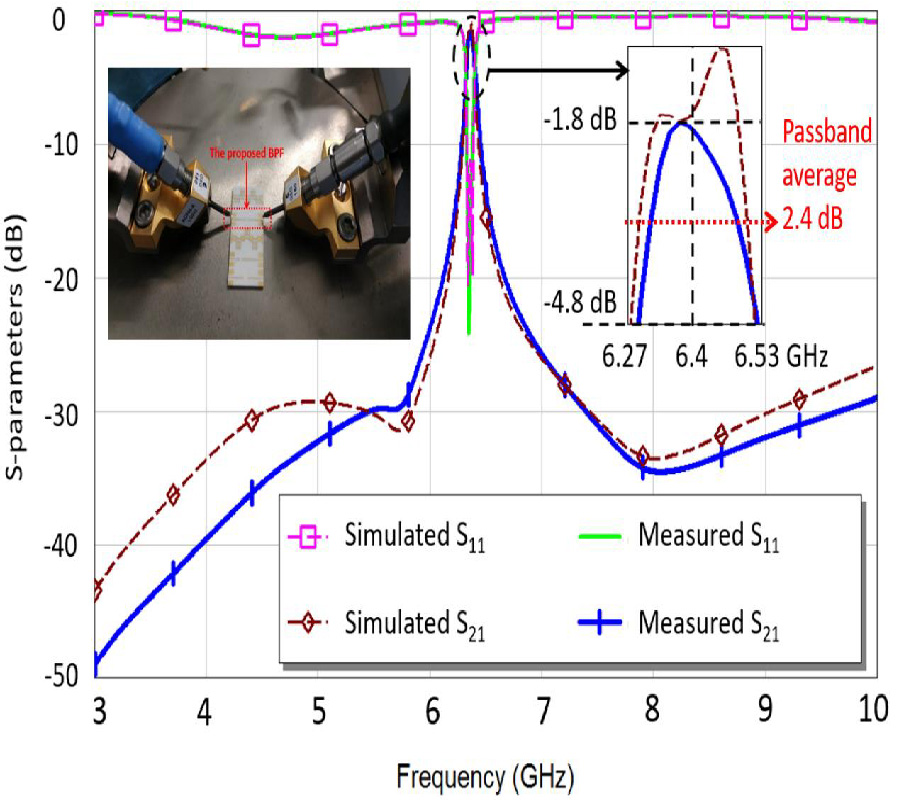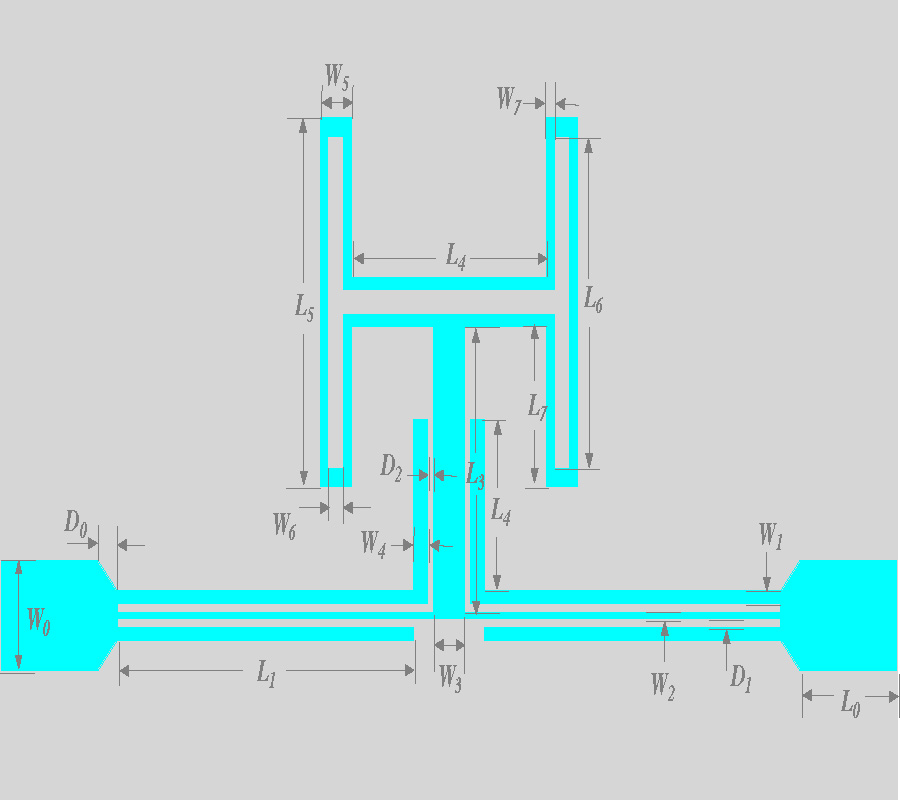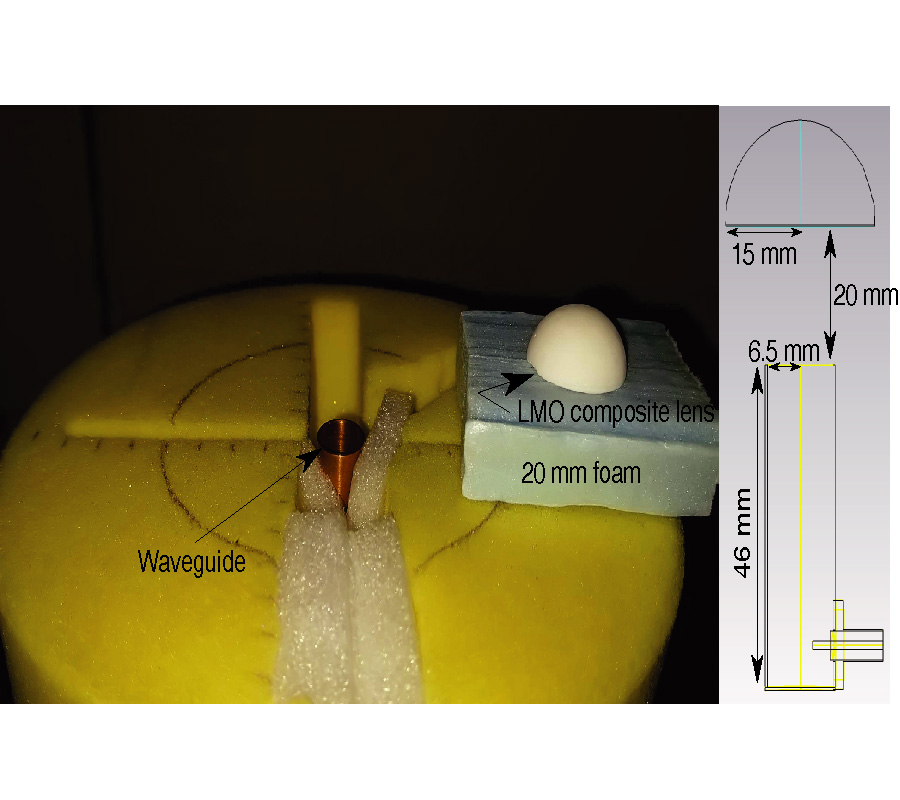A Novel Single Layer Ultra-Wideband Metamaterial Absorber
Pegah Nochian and
Zahra Atlasbaf
Electromagnetic interference (EMI) is a crucial problem, and for solving this problem, absorbers especially very thin absorbers are used. Factors like frequency increasing in a device, high integration in electronic systems, higher power densities, and decreasing the size and thickness of PCB make it crucial. So, a novel ultra-wideband and thin metamaterial absorber is proposed in this paper. The absorber consists of metamaterial unit cells, which have a single FR4 layer, metallic ground, and four metallic spirals. A one hundred ohms SMD resistor is placed between two of the spirals. The size of the unit cell is 5.85×5.85×3.2 mm3. The proposed absorber is ultra-thin (λ0/10), and the absorption occurs over a wide incident angle [0°-40°]. The reflection is less than -12dB in [6.5 GHz -12 GHz], and the absorption is more than 94% in this bandwidth. The structure is fabricated, and the outcomes of simulation and measurement are compared with each other. The values of front to back ratio of the fabricated measurements are -12.8, -7.31, and -15.36 dB at 8, 10, and 12 GHz, respectively. The values obtained from simulation are -13, -9.4, and -14 dB, respectively. There is a good agreement(accordance) between the simulation and measurement results of this absorber.
